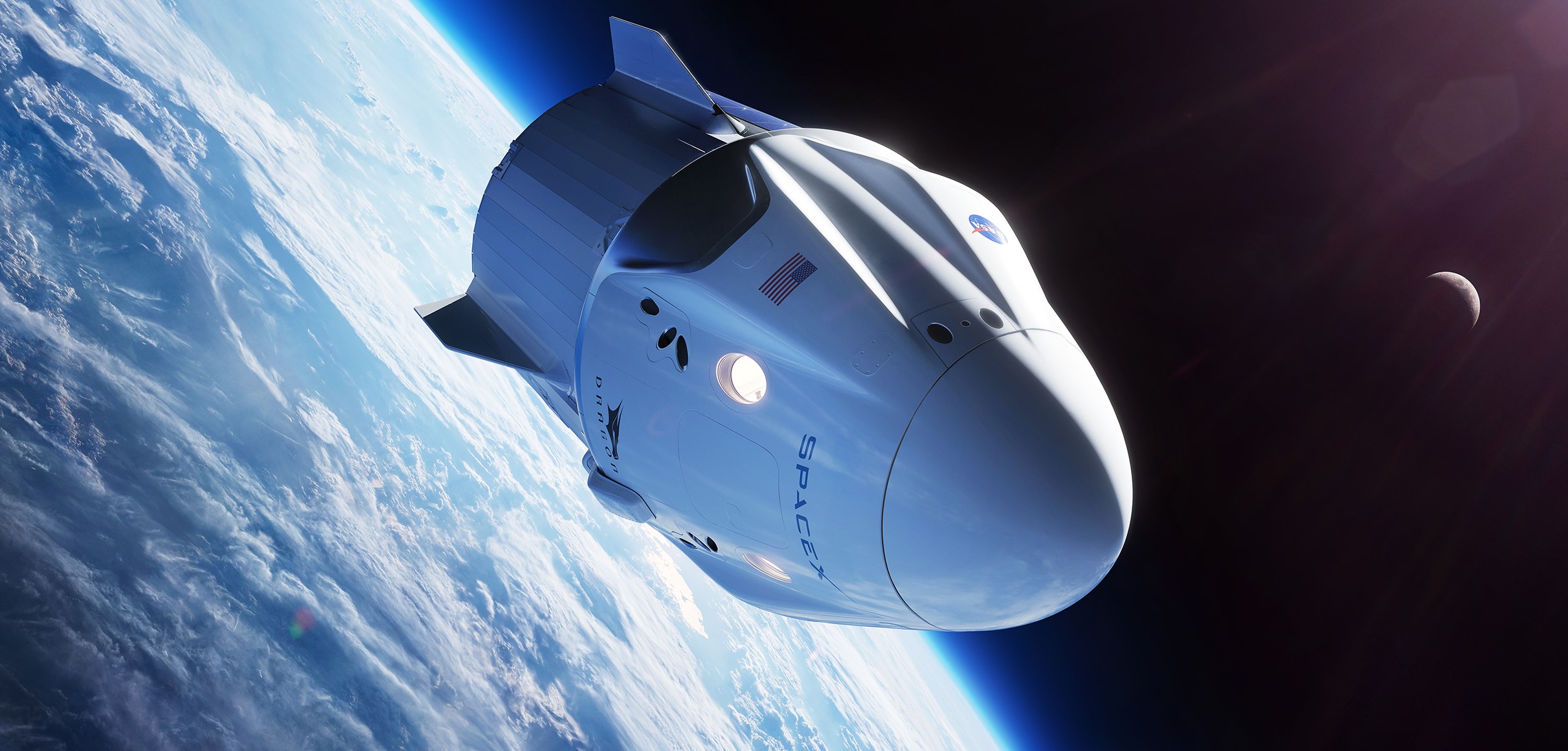
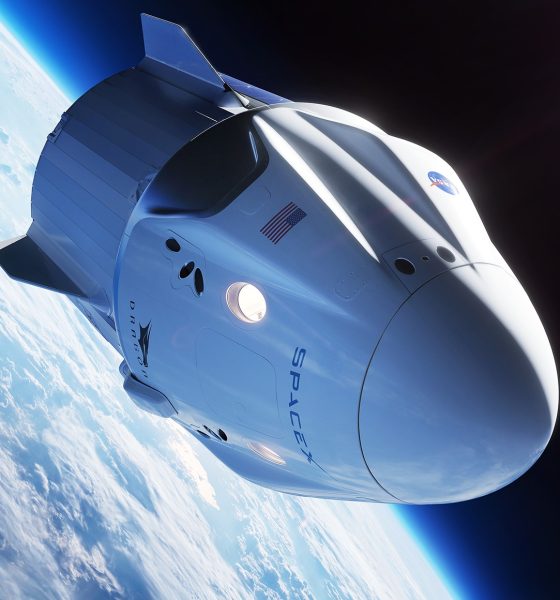
News
SpaceX aims to ship two new Crew Dragon spacecraft to Florida in the next two months
Speaking in an interview with CNN shortly after presenting an update on Starship, SpaceX CEO Elon Musk says that the company’s next two completed Crew Dragon spacecraft are both set to arrive in Florida before the end of the year.
Specifically, Musk estimated that Crew Dragon capsule 03 (C203) and its expendable trunk would be sent from SpaceX’s Hawthorne, CA factory to Cape Canaveral, FL as early as October. Crew Dragon capsule C204 is then expected to follow around one month later, arriving in Florida for preflight preparation as early as November.
Crew Dragon is an upgraded, human-rated follow-up to SpaceX’s highly successful Cargo Dragon, an uncrewed spacecraft that has successfully completed 19 orbital launches since December 2010. Over the course of those missions, Cargo Dragon has delivered almost 40 metric tons of cargo (39.5t, 87,000 lb) to the International Space Station (ISS) under SpaceX’s NASA Commercial Resupply Services 1 (CRS1) contract.
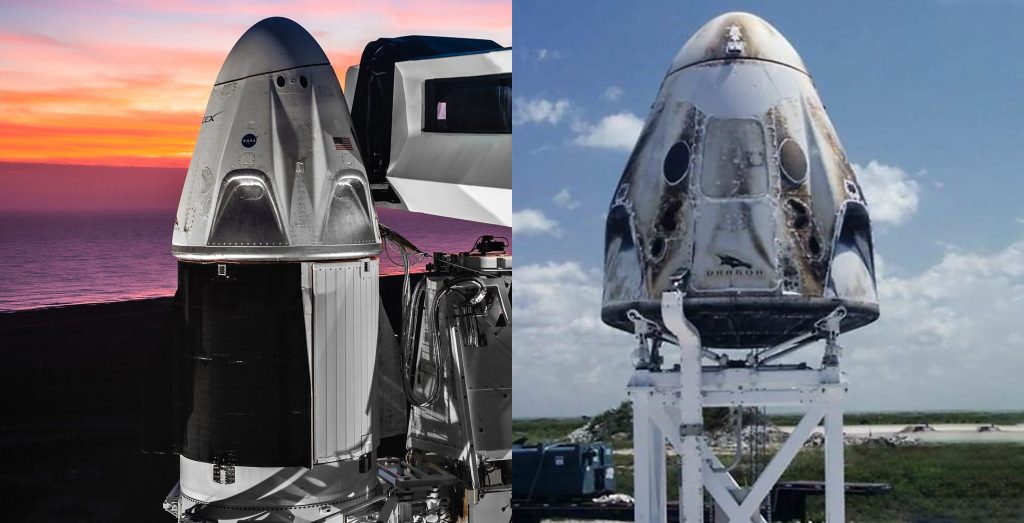
SpaceX executives have stated several times that Cargo Dragon (Dragon 1) and Crew Dragon (Dragon 2) barely have a single shared part between them, but Crew Dragon nevertheless shares the heritage built by its predecessor’s successful career. Like Dragon 1, Dragon 2 is comprised of two main sections – a capsule and a service section (known by SpaceX as a trunk). The capsule is designed to be recovered and reused, while the trunk is detached in orbit to eventually burn up in Earth’s atmosphere.
Same as Cargo Dragon, Crew Dragon’s trunk serves three main purposes aside from its basic structural role, providing power to the spacecraft with a solar array, regulating spacecraft temperature with a built-in radiator, and storing unpressurized cargo bound for the ISS.
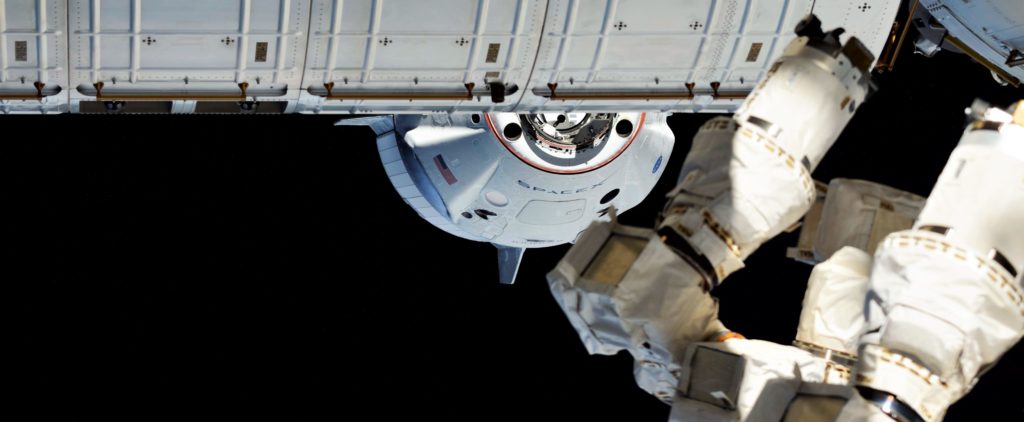
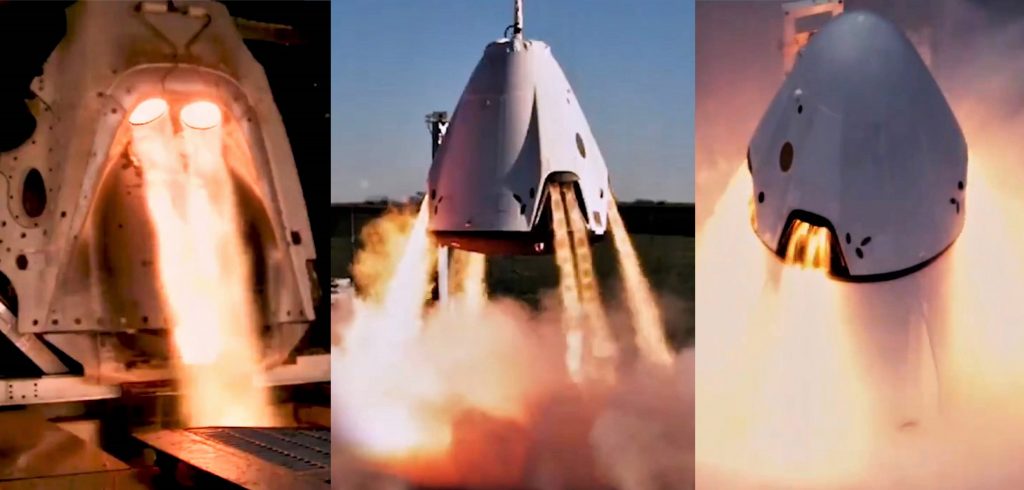
Unlike Cargo Dragon, Crew Dragon features a launch abort system (LAS) powered by eight Super Draco engines, nominally capable of carrying astronauts to safety in the event of a Falcon 9 failures at any point during launch. On April 20th, recently flight-proven Crew Dragon capsule C201 suffered a catastrophic explosion as a result of a design flaw in its high-pressure propellant system. Eventually blamed on the use of a leaky, titanium valve in a high-pressure, oxidizer-rich environment, that explosion significantly delayed SpaceX’s Crew Dragon test flight schedule.
Prior to April 20th, SpaceX anticipated launching Crew Dragon’s In-Flight Abort (IFA) test as early as July 2019, followed by the spacecraft’s crewed demonstration launch (Demo-2) in September or October 2019. Capsule C201 was supposed to support the IFA test and its destruction forced SpaceX to reconfigure its spacecraft flight order, reassigning the capsule (C203) originally intended to fly astronauts on Demo-2 to IFA, while the Dragon (C204) meant for SpaceX’s second astronaut launch (known as PCM-1) was reassigned to Demo-2.
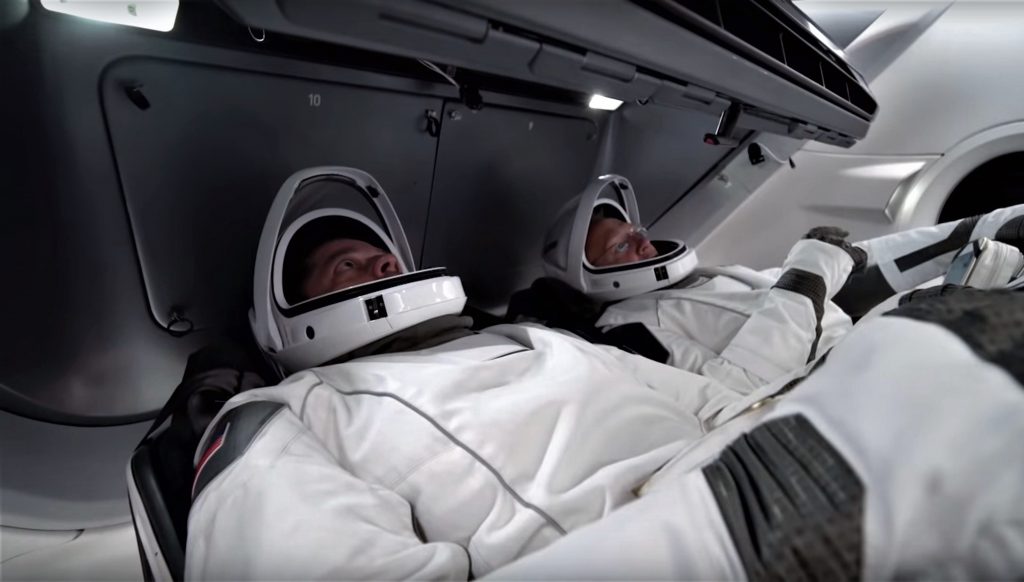
As of early September, SpaceX and NASA had nearly completed Crew Dragon’s static fire explosion investigation. The next few Crew Dragon spacecraft could have almost certainly been completed months ago, but SpaceX had to pause their integration to preserve access in the event that significant modifications were needed to recertify the capsules for flight. With the IFA Dragon set to arrive as early as October, SpaceX will have up to one month to prepare for the abort test, currently scheduled to occur no earlier than (NET) November 23rd according to recent FCC applications.
Assuming that Dragon performs flawlessly during the IFA, NASA could give Demo-2 – Crew Dragon’s inaugural astronaut launch – permission to launch as early as Q1 2020.
Check out Teslarati’s Marketplace! We offer Tesla accessories, including for the Tesla Cybertruck and Tesla Model 3.

News
Tesla is seeing a lot of momentum from young Koreans in their 20s-30s: report
From January to November, young buyers purchased over 21,000 Teslas, putting it far ahead of fellow imported rivals like BMW and Mercedes-Benz.

Tesla has captured the hearts of South Korea’s 20s-30s demographic, emerging as the group’s top-selling imported car brand in 2025. From January to November, young buyers purchased over 21,000 Teslas, putting it far ahead of fellow imported rivals like BMW and Mercedes-Benz.
Industry experts cited by The Economist attributed this “Tesla frenzy” to fandom culture, where buyers prioritize the brand over traditional car attributes, similar to snapping up the latest iPhone.
Model Y dominates among young buyers
Data from the Korea Imported Automobile Association showed that Tesla sold 21,757 vehicles to the 20s-30s demographic through November, compared to BMW’s 13,666 and Mercedes-Benz’s 6,983. The Model Y led the list overwhelmingly, with variants like the standard and Long Range models topping purchases for both young men and women.
Young men bought around 16,000 Teslas, mostly Model Y (over 15,000 units), followed by Model 3. Young women followed a similar pattern, favoring Model Y (3,888 units) and Model 3 (1,083 units). The Cybertruck saw minimal sales in this group.
The Model Y’s appeal lies in its family-friendly SUV design, 400-500 km range, quick acceleration, and spacious cargo, which is ideal for commuting and leisure. The Model 3, on the other hand, serves as an accessible entry point with lower pricing, which is valuable considering the country’s EV subsidies.
The Tesla boom
Experts described Tesla’s popularity as “fandom culture,” where young buyers embrace the brand despite criticisms from skeptics. Professor Lee Ho-geun called Tesla a “typical early adopter brand,” comparing purchases to iPhones.
Professor Kim Pil-soo noted that young people view Tesla more as a gadget than a car, and they are likely drawn by marketing, subsidies, and perceived value. They also tend to overlook news of numerous recalls, which are mostly over-the-air software updates, and controversies tied to the company.
Tesla’s position as Korea’s top import for 2025 seems secured. As noted by the publication, Tesla’s December sales figures have not been reported yet, but market analysts have suggested that Tesla has all but secured the top spot among the country’s imported cars this year.
News
Tesla FSD fleet is nearing 7 billion total miles, including 2.5 billion city miles
As can be seen on Tesla’s official FSD webpage, vehicles equipped with the system have now navigated over 6.99 billion miles.

Tesla’s Full Self-Driving (Supervised) fleet is closing in on almost 7 billion total miles driven, as per data posted by the company on its official FSD webpage.
These figures hint at the massive scale of data fueling Tesla’s rapid FSD improvements, which have been quite notable as of late.
FSD mileage milestones
As can be seen on Tesla’s official FSD webpage, vehicles equipped with the system have now navigated over 6.99 billion miles. Tesla owner and avid FSD tester Whole Mars Catalog also shared a screenshot indicating that from the nearly 7 billion miles traveled by the FSD fleet, more than 2.5 billion miles were driven inside cities.
City miles are particularly valuable for complex urban scenarios like unprotected turns, pedestrian interactions, and traffic lights. This is also the difference-maker for FSD, as only complex solutions, such as Waymo’s self-driving taxis, operate similarly on inner-city streets. And even then, incidents such as the San Francisco blackouts have proven challenging for sensor-rich vehicles like Waymos.
Tesla’s data edge
Tesla has a number of advantages in the autonomous vehicle sector, one of which is the size of its fleet and the number of vehicles training FSD on real-world roads. Tesla’s nearly 7 billion FSD miles then allow the company to roll out updates that make its vehicles behave like they are being driven by experienced drivers, even if they are operating on their own.
So notable are Tesla’s improvements to FSD that NVIDIA Director of Robotics Jim Fan, after experiencing FSD v14, noted that the system is the first AI that passes what he described as a “Physical Turing Test.”
“Despite knowing exactly how robot learning works, I still find it magical watching the steering wheel turn by itself. First it feels surreal, next it becomes routine. Then, like the smartphone, taking it away actively hurts. This is how humanity gets rewired and glued to god-like technologies,” Fan wrote in a post on X.
News
Tesla starts showing how FSD will change lives in Europe
Local officials tested the system on narrow country roads and were impressed by FSD’s smooth, human-like driving, with some calling the service a game-changer for everyday life in areas that are far from urban centers.

Tesla has launched Europe’s first public shuttle service using Full Self-Driving (Supervised) in the rural Eifelkreis Bitburg-Prüm region of Germany, demonstrating how the technology can restore independence and mobility for people who struggle with limited transport options.
Local officials tested the system on narrow country roads and were impressed by FSD’s smooth, human-like driving, with some calling the service a game-changer for everyday life in areas that are far from urban centers.
Officials see real impact on rural residents
Arzfeld Mayor Johannes Kuhl and District Administrator Andreas Kruppert personally tested the Tesla shuttle service. This allowed them to see just how well FSD navigated winding lanes and rural roads confidently. Kruppert said, “Autonomous driving sounds like science fiction to many, but we simply see here that it works totally well in rural regions too.” Kuhl, for his part, also noted that FSD “feels like a very experienced driver.”
The pilot complements the area’s “Citizen Bus” program, which provides on-demand rides for elderly residents who can no longer drive themselves. Tesla Europe shared a video of a demonstration of the service, highlighting how FSD gives people their freedom back, even in places where public transport is not as prevalent.
What the Ministry for Economic Affairs and Transport says
Rhineland-Palatinate’s Minister Daniela Schmitt supported the project, praising the collaboration that made this “first of its kind in Europe” possible. As per the ministry, the rural rollout for the service shows FSD’s potential beyond major cities, and it delivers tangible benefits like grocery runs, doctor visits, and social connections for isolated residents.
“Reliable and flexible mobility is especially vital in rural areas. With the launch of a shuttle service using self-driving vehicles (FSD supervised) by Tesla in the Eifelkreis Bitburg-Prüm, an innovative pilot project is now getting underway that complements local community bus services. It is the first project of its kind in Europe.
“The result is a real gain for rural mobility: greater accessibility, more flexibility and tangible benefits for everyday life. A strong signal for innovation, cooperation and future-oriented mobility beyond urban centers,” the ministry wrote in a LinkedIn post.








